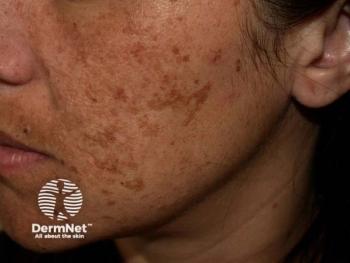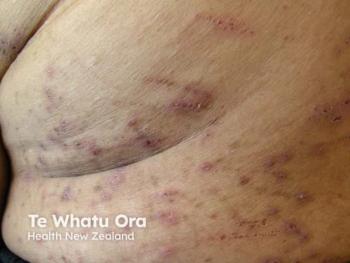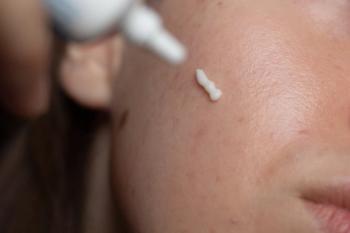
Jean Tang, MD, PhD, Reflects on FDA Approval of pz-cel for EB
Key Takeaways
- Prademagene zamikeracel (pz-cel) offers the first autologous, cell-based gene therapy for recessive dystrophic epidermolysis bullosa (RDEB), correcting the COL7A1 mutation in patient skin cells.
- Clinical trials, including the pivotal phase 3 VIITAL study, demonstrated sustained wound healing and pain reduction, with benefits lasting years after a single treatment.
The FDA’s approval of prademagene zamikeracel (pz-cel) (Zevaskyn; Abeona Therapeutics) marks a major milestone for patients with recessive dystrophic epidermolysis bullosa (RDEB), offering the first autologous, cell-based gene therapy for this rare, debilitating condition. In a recent interview with Dermatology Times, Jean Tang, MD, PhD, professor of dermatology at Stanford University and general dermatologist at Stanford Medicine Children’s Health, highlighted how the therapy harnesses a patient’s own skin cells, corrects the COL7A1 mutation ex vivo, and expands them into keratinocyte sheets that are surgically applied to chronic wounds. Clinical trials, including the pivotal phase 3 VIITAL study, demonstrated sustained wound healing and pain reduction, with benefits lasting years after a single treatment. Tang emphasized the transformative impact for patients with historically untreatable wounds, noting that pz-cel represents not only a new standard of care for severe epidermolysis bullosa (EB) but also a landmark advancement in personalized, gene-targeted therapies.1-2
Q&A
DT: What were some of the key scientific and clinical milestones that made the FDA approval of these skin grafts possible?
Tang: The key scientific milestone was the result of more than 20 years of work by Stanford scientists who developed a virus capable of packaging and introducing the wild-type gene into patient cells. The Stanford University Department of Dermatology devoted extensive time and energy to ensure these genetically engineered skin grafts were safe. They demonstrated efficacy in mouse models of dystrophic EB and then conducted phase 1 and phase 2 clinical trials at Stanford, which showed the grafts were safe, promoted wound closure, and reduced pain and itch.
This achievement was particularly remarkable because these were cell therapy products intended for patient use. Since Stanford does not have a GMP manufacturing facility, the university had to create a “bio bubble” to produce the grafts. Once human clinical data demonstrated that the therapy was effective, Stanford partnered with Abeona Therapeutics. While the scientific technology and patents originated at Stanford, Abeona licensed the intellectual property and, as a commercial company, had the funding and infrastructure to develop and conduct the phase 3 trial. Since FDA approval in April, Abeona is now manufacturing and distributing the drug for patients. A university or medical school alone could never produce or distribute these grafts on a large scale—this is beyond Stanford’s role.
Another key clinical milestone is tied to the nature of recessive dystrophic EB, a rare disease. While the FDA is used to seeing wound-healing data for more common wounds—such as diabetic foot or sacral ulcers—EB wounds behave differently. Some wounds are small and heal and reopen repeatedly, while others are chronic, much larger, and cause significant pain and itch. Chronic EB wounds can also increase the risk of squamous cell carcinoma due to ongoing inflammation.
The regulatory milestone involved 2 years of discussions with the FDA to explain why this rare disease is so different from typical wounds, and why clinical trials necessarily involve relatively few patients. In typical trials for leg or foot ulcers, the FDA and patients focus on complete (100%) wound healing. In the phase 3 trial, the co-primary endpoints were (1) greater than 50% wound healing in treated wounds compared with controls, and (2) reduction in pain following surgery. The focus on 50% wound size reduction was intentional, because these wounds are large and may have existed for 10–20 years. Reducing a giant wound to a smaller size provides meaningful benefit, allowing for re-grafting or additional treatments, while significantly improving patient quality of life. The FDA needed to understand that EB wounds behave and impact patients very differently from typical smaller leg wounds.
DT: What surprised you the most about the patient outcomes observed?
Tang: What surprised me most about the patient outcomes was how quickly we were able to enroll patients, despite a pause due to COVID. We observed a notable heterogeneity of response. In some patients, wounds located on the arms or legs healed more readily, likely because those grafts were easier to protect and care for. In contrast, wounds on the back—where patients lie down and move frequently—were much harder to heal, probably due to friction and pressure that made it difficult for the grafts to take.
What was particularly striking was the healing seen in patients who participated in the open-label study following the phase 3 trial. Open-label studies allow patients from earlier trials who still have untreated wounds to return for additional treatment. Several dystrophic EB patients returned to Stanford for retreatment, and some have undergone 3 surgeries and are still not fully done, highlighting the extensive number of wounds these patients have across their bodies.
For me, it is very encouraging that these patients are comfortable with the pz-cel and the surgical procedure. The fact that they willingly return for additional treatment demonstrates that the research and development of these skin grafts is working as intended.
DT: What do you hope to learn from the long term follow up of these patients over time?
Tang: The long-term follow-up is 15 years after surgery, as required by the FDA for this gene therapy product. We use a retrovirus to insert the wild-type gene into patient cells, which are then grown into a sheet and surgically applied onto a wound. The long-term follow-up ensures there are no significant adverse effects, which is especially important given that this is gene therapy.
The phase 3 trial involved 11 patients, and the phase 1 and 2 trials included 8 additional patients. Any potential adverse effects or complications require careful monitoring over time and across more patients. My goals for the long-term follow-up are twofold: first, to confirm the therapy’s safety; and second, to learn from more wounds and patients. This will help optimize wound care, surgical techniques, and patient positioning during recovery to maximize wound healing for everyone.
DT: How do you envision this therapy changing the standard of care for patients with severe dystrophic EB in the coming years?
Tang: I know this therapy will change the standard of care for the severe dystrophic EB patients. A number of our patients have had huge wounds that have been there for 10-15 years. The fact that some of them are now able toparticipate in high school dances, to have a job, to not deal with so much pain and wound healing. I know that anybody with dystrophic EB, with large wounds, they are thinking about using this.
The good news, for EB, is that there are other topical approaches and topical medicines. We're hoping that the patients get to choose, maybe smaller wounds, maybe it's a younger patient who go for the topical drugs. Those topical drugs help wound healing, but it certainly doesn't cure the disease. If there are larger wounds, and the patient has several such that, surgery makes sense, then the pz-cel gene therapy, skin grafts, will really, I believe, help them.
DT: What else do you hope clinicians take away from the research into this therapy moving forward?
Tang: The science really works, even for such a rare disease as EB. We use a retrovirus to insert the collagen VII gene into the patient’s cells. These corrected cells are then grown into skin grafts and surgically applied to the patient’s wounds. Because the grafts come from the patient’s own cells, immunosuppressive drugs are not needed, which reduces the risk of adverse effects.
This demonstrates that dermatology can meaningfully improve the lives of patients with some of the most challenging skin diseases, such as EB. Any dermatologist will acknowledge how difficult these patients are to treat—they suffer from painful, itchy wounds that significantly impair their quality of life. I believe any dermatologist reading this study will be excited that there is now an effective treatment for these deserving patients.
References
- US FDA approves zevaskyn (prademagenezamikeracel), the first and only cell-based gene therapy for patients with recessive dystrophic epidermolysis bullosa (RDEB). News release. Abeona Therapeutics. Published April 29, 2025. Accessed August 18, 2025.
https://investors.abeonatherapeutics.com/press-releases/detail/303/u-s-fda-approves-zevaskyn-prademagene-zamikeracel - Abeona Therapeutics announces FDA acceptance of BLA resubmission of pz-cel for the treatment of recessive dystrophic epidermolysis bullosa. News release. Abeona Therapeutics. Published November 12, 2024. Accessed August 18, 2025.
https://investors.abeonatherapeutics.com/press-releases/detail/294/abeona-therapeutics-announces-fda-acceptance-of-bla
Newsletter
Like what you’re reading? Subscribe to Dermatology Times for weekly updates on therapies, innovations, and real-world practice tips.


















